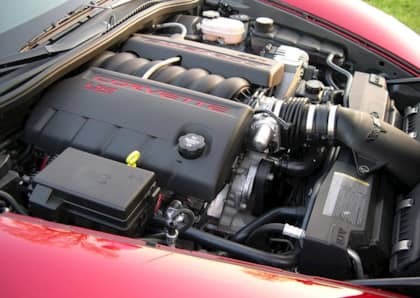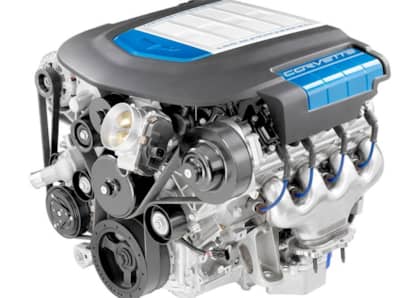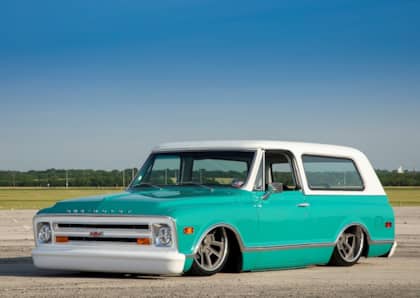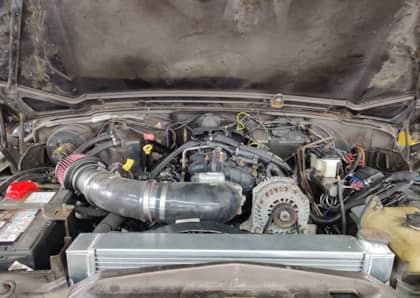Performance Roadblocks For The 5.7 LS1 V8: Stepping Up From Stock Power
The 5.7-liter LS1 was the first member of the General Motors Generation III engine family, which would collectively become known as 'LS' motors. It debuted in the 1997 Chevrolet Corvette, but quickly spread to the Chevrolet Camaro and Pontiac Trans Am. All told, it was offered between '97-'04 across those three models, and would serve as the springboard for the very popular LS V8s that set the tone for more than a decade of pushrod designs.

As a starting point, the LS1 was an eye-opener for Chevy fans. Its all aluminum architecture made it significantly lighter than past GM V8s, and power was great: the engine was rated at 345-350 horses in the Corvette (depending on model year) and would check in at as much as 325 hp in the F-body cars.
The Camaro and Trans Am especially had rarely been this close to the Corvette right out of the box. It was soon discovered that the LS responded very well to all manner of modifications, which would further distance GM's performance division from traditional rival Ford, which at the time was having trouble convincing the aftermarket to support its new 4.6-liter modular V8 in the Mustang.

The LS1 has been a popular and affordable swap target for anyone seeking eight-cylinders of power in a relatively compact package. That being said, technology has surged forward since the engine's late-90s heyday, and the LS family design has significantly improved in a number of areas as a result.
Where should you start when trying to take the LS1 past stock power? Here are our suggestions for getting past the roadblocks that hold the original LS V8 back.
Performance Roadblock #1: Intake
The LS1 has an in-house advantage in that it's virtually identical in design to the stouter 5.7-liter LS6 that would appear in 2001, and which topped out at about 400 horsepower in the Corvette Z06 and Cadillac CTS-V. Part of that power boost came from a better intake design, which happens to be a near-direct replacement for the standard LS1 unit also uses the same size throttlebody.

If you want to move from the 78mm throttle body to a 90mm throttle body, there are plenty of aftermarket intakes out there that will allow you to do that, too. With the right tune, you can snag roughly 20 horsepower with this setup, and enjoy snappier response from the throttle as well.
Performance Roadblock #2: Cylinder Heads
Furthering the quest to help the LS1 breathe better is sourcing higher-flow heads. Again, it's the LS6 to the rescue, which improves on the standard LS1's 250 cfm flow rate thanks to its larger ports. Some builders also take the opportunity afforded by the LS6 design to increase engine compression, but that's not our focus here with this particular mod. If higher compression is your thing, then you can also look to the later LM7 heads from the 5.3-liter LS that are affordable to purchase and install, and will match the LS1's stock heads for flow as long as you take care of their smaller valves at the time of installation.

Aftermarket heads that flow as high as 450 cfm are not uncommon, either. There's a lot of potential locked up in the LS1 built in as a 'margin of error' at the factory when found in stock form.
Performance Roadblock #3: Camshaft
The LS engine family is often a cam swap away from another 50-100 more horsepower, and the LS1 is no exception, especially with head and intake work already done. There are really no rules on what does and doesn't work in terms of camshafts for the LS1, but you'll need to keep in mind two things when replacing the factory unit.

The first is to match your cam profile for the type of driving you're doing. A massive, lumpy idle that offers nearly no vacuum and doesn't like to be below 4,000 rpm isn't going to do you much good in a street car. Most cams will shift the powerband at least a little, so if you're going to be racing and keeping the revs up, choose a cam that will match where the engine spends most of its time. If you're going to be cruising or driving to work, make sure you don't sacrifice all of your low-end torque.
The second thing to consider is the need to support a more aggressive cam with the proper valvetrain upgrades. Don't rely on the stock LS1 valve springs, etc, because you may not make it past that first full-throttle launch.
Performance Roadblock #4: Pistons + Connecting Rods
If you're starting to nose past 500 horsepower, you're going to want to at the very least deal with the LS1's known weaknesses in its rotating assembly. Without valve reliefs in its pistons, the LS1 has less clearance than is considered safe in a high performance environment. This makes it a good idea to consider a forged set that offers a design that will avoid chipping.

Upgrading rod bolts at this point is also important if you are working with a pre-2000 LS1. After 2001, GM switched to the same bolts used in the LS6, which will work in earlier engines as well.
Performance Roadblock #5: Fuel Injectors
As with any engine, once you start increasing airflow you're going to need a fuel system that can keep up—and a tune to make sure it all plays nice together. The 28 pound fuel injectors that come stock with the LS1 are fine until you are close to the 400 horsepower mark, at which point you'll want to step up to a more robust set. At the same time, swap in a higher flow fuel pump, too.

You can find higher-rate injectors quite easily, and even those intended for later LS engines (such as the LS2) are simple to adapt on the LS1 by way of a basic harness plug. 36 lb to 42 lb injectors are the most common replacements for non-turbo applications.
Looking for more LS engine upgrade advice? Check out our feature on performance roadblocks for the 5.3 LS.











